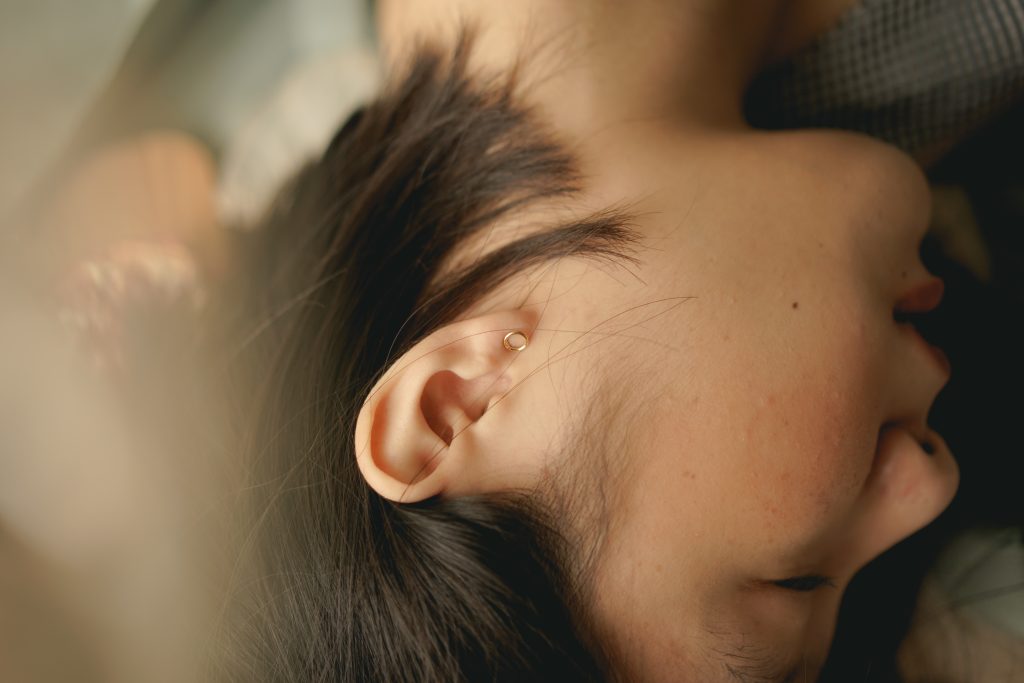
Show the clinics offering Otoplasty
Otoplasty - what is it?
 Ear reshaping is a type of plastic surgery involving the ear. During ear shaping, your plastic surgeon can adjust the size, position, or shape of your ears. Some people choose to have otoplasty to correct a structural abnormality. Others have it because their ears protrude too much from their head and they don’t like it. What is ear shaping? Ear reconstruction is sometimes called cosmetic ear surgery. It is performed on the visible part of the outer ear, called the auricle. The ear consists of folds of cartilage covered with skin. It begins to develop before birth and continues to grow in the years after you are born. If your auricle is not growing properly, you may choose to have otooplasty to correct the size, position, or shape of your ear.
Ear reshaping is a type of plastic surgery involving the ear. During ear shaping, your plastic surgeon can adjust the size, position, or shape of your ears. Some people choose to have otoplasty to correct a structural abnormality. Others have it because their ears protrude too much from their head and they don’t like it. What is ear shaping? Ear reconstruction is sometimes called cosmetic ear surgery. It is performed on the visible part of the outer ear, called the auricle. The ear consists of folds of cartilage covered with skin. It begins to develop before birth and continues to grow in the years after you are born. If your auricle is not growing properly, you may choose to have otooplasty to correct the size, position, or shape of your ear.
There are several types of otoplasty:
- Ears augmenting – some people may have small or undeveloped ears. In these cases, they may want otoplasty to increase the size of the outer ear.
- Ears pinning – this type of otoplasty involves bringing the ear closer to the head. It is performed on people whose ears protrude on either side of the head.
- Ear reducing – macrotia is when your ears are bigger than usual. People with macrotia may choose to have otoplasty to reduce the size of their ears.
The best age for ear shaping
Basically, there is no best age for ear shaping. However, it is true that otoplasty can be performed for both children and adults. Ear blepharoplasty for children can be done from age 5 and up. The great advantage of ear plastic surgery at a young age is that the cartilage is soft and flexible, so the surgical process is more convenient and the recovery is faster. In addition, children who undergo otoplasty experience a great deal of psychological relief – they avoid or stop being teased or teased because of the shape, size or protrusion of their ears. On the other hand, we must keep in mind that otoplasty is still surgery, and here adult otoplasty makes more sense. For adults, it is always a personal decision, while in children or adolescents, parents often make this decision seriously without consulting them with children who often do not. really understand what’s going on. For children, adolescents or adults, it is best to consult a plastic surgeon and seek advice before making a final decision about surgery.
Ear shaping procedure
 Overall, for a simple bilateral otooplasty, the surgical procedure looks the same so there’s not much of a difference here. The duration of surgery can vary from 1 to 2.5-3 hours. Otoplasty is an outpatient surgery. In most cases, especially for adults and adolescents, only local anesthesia with sedation is sufficient. However, for children or in some cases for adults, the surgeon may use general anesthesia. The rule is that for simple procedures, e.g. just an ear piercing surgery or simply the removal of excess skin above the ear, no general anesthesia is required. Once anesthesia is applied, a surgeon moves on to make the incisions. Surgical incisions are made behind the ear or inside the folds of the ear. Through the incisions, the surgeon can manipulate the ear tissue, remove excess cartilage or skin, bend and shape new cartilage, and staple the ear. Additionally, the surgeon places permanent stitches inside the ear to keep it in its new shape and position. These stitches are not visible or palpable. Once all modifications have been made, the incisions will be closed with stitches.
Overall, for a simple bilateral otooplasty, the surgical procedure looks the same so there’s not much of a difference here. The duration of surgery can vary from 1 to 2.5-3 hours. Otoplasty is an outpatient surgery. In most cases, especially for adults and adolescents, only local anesthesia with sedation is sufficient. However, for children or in some cases for adults, the surgeon may use general anesthesia. The rule is that for simple procedures, e.g. just an ear piercing surgery or simply the removal of excess skin above the ear, no general anesthesia is required. Once anesthesia is applied, a surgeon moves on to make the incisions. Surgical incisions are made behind the ear or inside the folds of the ear. Through the incisions, the surgeon can manipulate the ear tissue, remove excess cartilage or skin, bend and shape new cartilage, and staple the ear. Additionally, the surgeon places permanent stitches inside the ear to keep it in its new shape and position. These stitches are not visible or palpable. Once all modifications have been made, the incisions will be closed with stitches.
Recovery after otoplasty
How long does it take to recover from ear surgery? Recovery time after otoplasty is relatively short. The fact that the procedure usually takes place under local anesthesia also shortens this time. On average, people need 6 weeks to fully recover, but they can resume most daily activities even after 2-3 weeks. Rigorous frameworks for day-to-day otooplasty recovery cannot be given as each patient undergoes otoplasty recovery differently, but below we outline a recovery schedule. average post-implantation so that the patient knows what to expect:
 Day 1
Day 1
The patient feels itching, pain and swelling in the ears and head; the surgical site is covered with a bandage, or some patients have been fitted with an otooplasty recovery headband – this must be worn to keep the ear protected and covered; on this day, most patients have to take painkillers to relieve the severe pain; patients should rest in bed and keep their head elevated for 24 hours – this helps reduce bruising and pain; Side sleeping is prohibited during this period.
Week 1
Restoration after otooplasty with bandages is waived (postoperative dressing removal may take place at home or in the hospital), but patients should wear a bandage as recommended by the surgeon; by the end of this week most of the swelling should have subsided; the pain should also go away within a week – if it doesn’t go away or even gets worse over time, the patient should discuss it with the surgeon; At this point in the postoperative recovery, patients should still avoid sleeping on their side.
Week 2
Regarding recovery from ear swelling, there may still be mild but barely noticeable swelling at this stage; during this week, patients usually decide to return to work or school – this happens around the 10th day after surgery; people who do physical work should wait a little longer; the headband must be worn at all times (mainly at night) – until the 6th week; After 6 weeks – for many people, the recovery period from otoplasty is over and they can admire the results of the surgery, with no more swelling; at this stage we recommend you consult a plastic surgeon to check if everything has healed; At this point in your recovery from otooplasty, sleeping on your side shouldn’t be a big deal.
Ear shaping results
The results of otoplasty are truly spectacular. Even if the changes only affect the ears – their shape, size or position, they affect the entire face. The image of the ear plastic surgery results clearly shows that the entire face changes significantly when only the ear is operated on. For otoplasty surgery, the satisfaction rate of plastic surgery is really high thanks to the simple procedure and very delicate techniques used. To see the actual changes that might occur, we recommend searching for otooplasty photos – many clinics share otoplasty photos with their patients, so it’s easy to find them . The results of otoplasty are immediate. They are visible immediately after the dressing is removed. However, the first few weeks after surgery can be quite confusing as the ear area may still be bruised and swollen, and patients are also advised to wear a blindfold for a few weeks so that the effects are fully visible after surgery. fully recovered. Ultimately, the effects of otoplasty are permanent, so it’s definitely worth investing in this procedure.
How much does ear surgery cost?
Well, several factors determine the cost of ear surgery. Therefore, it is not possible to say a universal cost of otoplasty. First of all, the price of otoplasty depends on what is involved in the surgery. Some patients only need correction of protruding ears, while others seek to correct severe deformities. Obviously, the cost of ear piercing surgery will be lower than the cost of surgery to correct congenital ear defects. Therefore, the complexity of the procedure plays an important role here. Furthermore, the cost of a corrective ear surgery is always more expensive than that of a first-time otoplasty because the procedure is much more demanding on the plastic surgeon.

Another factor that affects the price is the type of anesthetic. Local anesthesia makes the procedure cheaper. General anesthesia requires the presence of an anesthesiologist, additional blood tests, and hospitalization, so costs naturally increase. The third determinant of price is the reputation of the surgeon. Undoubtedly, an experienced board-certified plastic surgeon will offer a higher cost of ear reduction or reduction surgery than a young plastic surgeon who just graduated from college. and is in the early stages of his career. Finally, prices vary between clinics. Each hospital has its own facility fees and surgery fees, and the more popular the clinic, the higher the cost of otoplasty tends to be.
Taking into account the above factors, we can conclude that the price for otooplasty varies considerably. We also recommend that patients check what is included in the price offered to them. Ideally, the price should include medical tests, hospitalization, post-operative clothing, eye patch, and medication so that the patient does not incur any additional costs associated with surgery. Sometimes these aspects are not included in the price, so the patient has to pay extra, and it is good to add it to the total cost when comparing prices.
Otoplasty UK is offered by every plastic surgery clinic, it is a simple procedure and one of the most commonly chosen by patients. When it comes to the cost of ear surgery in the UK, prices vary depending on:
- city (London otoplasty is the most common and it sets the highest standards, so London otoplasty tends to be more expensive, such as Manchester or Leeds)
- type of surgery (ear correction surgery in the UK can vary – for example, the cost of ear stapling surgery in the UK is relatively low, as well as the cost of ear correction surgery on the earlobe in the UK, while ear reconstruction surgery in the UK or some trauma ear correction surgeries in the UK are much more expensive).
We can generalize that the price of otoplasty in the UK ranges from 2000 GBP to 5500 GBP. There is a big difference between the starting and ending price of otoplasty, but it’s best to understand the average cost of ear surgery in the UK is around 3750 GBP.
Poland - ear shaping abroad
Poland is a Central European country located on the coast of the Baltic Sea. It is one of the leading countries in Europe for medical tourism. Its private healthcare service is an example for other countries, Polish clinics use modern equipment, advanced technology, computerized solutions and the latest equipment. It should also be mentioned that Poland trains the best surgeons in the world, including plastic surgeons. It is agreed that Polish plastic surgeons are the best specialists and have world-class authority compared to other countries. So, in terms of procedural standards, Poland is the best destination in Europe for medical tourists.

Furthermore, Poland has a number of international airports located close to uniquely beautiful cities – eg. Warsaw, Wrocław, Gdańsk or Krakow – it’s very easy to get there by plane. The cost of air tickets between Poland and the UK can be as low as 20 GBP (including round trip). We always recommend that international patients make the most of their trip to Poland and visit the local sites. There are many historical sites, tourist attractions, natural areas (mountains, lakes, national parks), places steeped in Polish culture and traditions, such as restaurants or museums, because So it is worth visiting and discovering Polish culture while there.
Going back to otoplasty, the average cost for otooplasty in Poland is 1090 GBP – which is surprisingly low for international patients. This cost usually includes blood tests, hospitalization, medications, anesthesia, and dressings. Additionally, many clinics offer all-inclusive packages that include hotels and local transportation.

